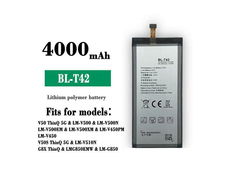Shopping for can be daunting. The best of the best cost a small fortune, with the $4,299 and the $3,899 costing consumers top dollar if they want to play modern games at high settings. But contrary to popular belief, the process doesn’t have to be daunting.
Gaming laptops must strike a balance between affordability and quality, but the latter isn’t a rating that must encompass your entire machine. Gaming laptops have several categories that can make or break a purchase, and quality can be high in one area and low in another to help you stay on budget.
So, what areas are most important when it comes to the quality of a gaming laptop? It depends on your preferences and expected uses. The simplest area is graphical power, as indie games or older titles won’t need the fanciest GPUs. Other areas are more complex, like if you plan to use the laptop plugged into an outlet or want something with enough juice to play on the go.
I’ve professionally tested gaming laptops for more than three years, putting dozens upon dozens of machines through the ringer, I’ve found that there are nine categories to scrutinize when determining if the laptop excels, from most to least important:
9 factors to consider in a gaming laptop
1. Graphical performance
2. Display
3. Processing performance
4. Design
5. Battery life
6. Heat and fan noise
7. Ports
8. Keyboard
9. Audio/touchpad.
Audio and touchpad are bundled in a single section, as they have minimal impact but could still inform a purchase in rare cases. It’s best to consider price a separate category, as the cost informs the categories listed above.
With gaming hardware prices rising and laptops of this caliber only becoming more in demand, with the market expected to increase in value from $11.48 billion to $17.23 billion between 2024 and 2032, getting your hands on an affordable product is more valuable now than ever.

